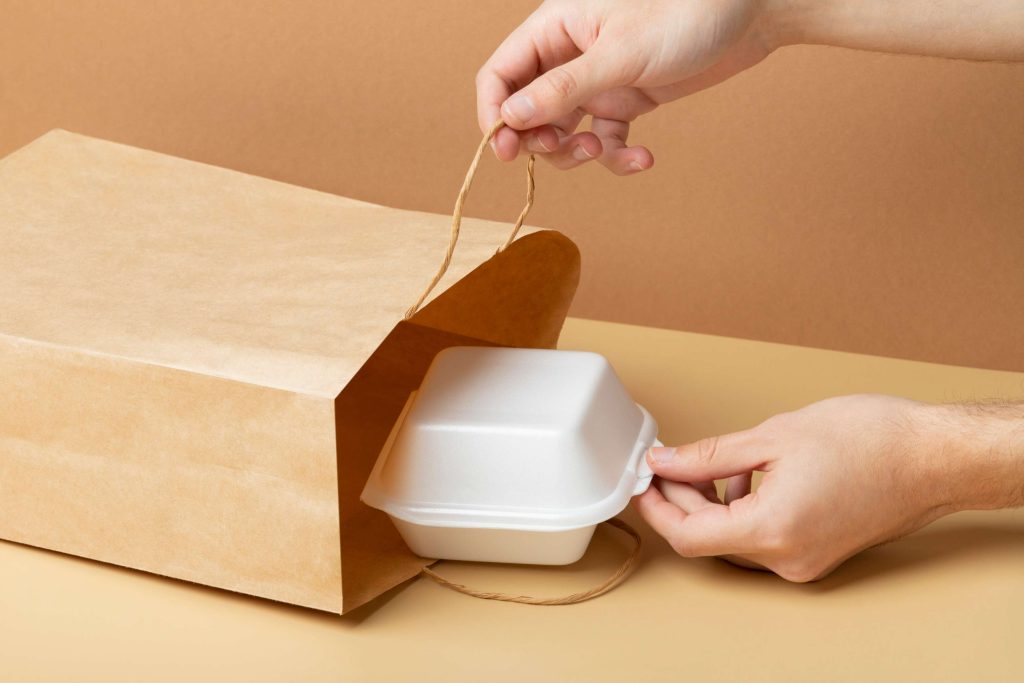Vending machines are everywhere. They are quick, simple, and serve millions each day. But behind that ease is a growing problem—waste. As more people rely on vending machines, the need for sustainable packaging grows.
Why Vending Machines Contribute to Global Waste
Vending machines sell single-use items. That means a lot of wrappers, cups, and containers get tossed after one use. These machines often rely on plastic packaging. Plastic is cheap and strong, but it sticks around for hundreds of years.
Most vending products are packed for convenience, not for the planet. For example, snack bags and candy wrappers often mix plastics with metal layers. These are hard to recycle. Even cups for drinks come with plastic lids and straws that add to the trash.
According to the EPA, containers and packaging make up nearly 30% of municipal solid waste in the U.S. A big share comes from food and drinks. Many vending machines run all day and night. That means they also use energy that adds to their environmental cost.
Reducing vending waste takes more than switching packaging. It needs better product design, better materials, and smarter machine systems.

What Sustainable Packaging Materials Are Made Of
Sustainable packaging avoids harm to the environment. It uses materials that break down faster or come from reusable sources. Paper, cardboard, and certain types of bioplastics are common options.
Plant-based materials are on the rise. These include corn starch packaging or sugarcane fiber trays. They offer a renewable choice and are often compostable. But they need proper disposal methods to work well.
Another option is recycled content. Some companies now use bottles or wrappers made from recycled plastic. This keeps more waste out of landfills. Glass and metal can be reused too, though they are heavier and cost more to move.
Even inks and labels matter. Eco-friendly inks break down more easily and avoid toxic runoff. Water-based adhesives also help with recycling. Packaging that skips unnecessary extras—like double wrapping—also helps cut waste.
The key is balance. The material must protect the product and be easy to dispose of. It should not cost too much or need rare resources.
How Vending Machines Are Becoming Greener
Modern vending machines are smarter. Many now use less power, have better insulation, and switch to LED lighting. These changes help cut energy use.
But the real shift comes from packaging. Some machines now offer bulk-style options, where users bring their own containers. Others use compostable cups and wrappers made from plants.
One company, Caiyunjuan, makes vending machines that serve cotton candy and ice cream using patented low-waste designs. Their machines cut energy use and reduce waste at the same time. They even use smart sensors for portion control, so fewer materials are wasted.
Recycling bins placed next to vending units also help. This works best when the packaging is easy to recycle. Clear labeling on packaging tells users how to throw it away properly.
Smart machines now track use. This data helps vendors manage stock better. Less spoilage means less waste. When restocked more often with fresh goods, there is also less expired food to throw out.
Why Design Matters for Sustainable Packaging
Good design does more than look nice. It solves problems. For packaging, that means using the least material to do the job well.
A strong design can make packaging stack better. That means more items per shipment and fewer trucks on the road. It can also help products stay fresh longer, so less food gets tossed.
Design also affects how people use the package. Easy-to-open, single-layer wraps are less likely to be torn wrong and wasted. Clear recycle instructions help people make the right choice.
OUFEI, a bag and packaging design company, works with brands to create smart, simple packaging. They focus on reducing material use while keeping the product safe. Their team uses both machine tools and design teams to match form with function.
Designing for reuse is another goal. Refillable containers and foldable packaging are gaining ground. They take planning up front but save materials over time. A clever design leads to less waste and a better user experience.

What Obstacles Still Exist for Sustainable Vending
Going green is not easy. Cost is a big hurdle. Eco-friendly packaging often costs more to make. That makes snacks and drinks pricier.
There is also a lack of compost or recycling access. A cup made of plants does not help if there is no compost bin nearby. Many areas do not sort trash well, so sustainable items still end up in landfills.
Shelf life matters too. Some green materials do not seal as tightly as plastic. This can lead to spoilage or damage. Food safety rules are strict, and packaging must protect against germs and leaks.
Change is slow. Brands often stick with what they know. They worry about changing customer habits. If people do not understand or like the new packaging, sales may fall.
Machine updates are also pricey. Many current machines are not built to handle new shapes or materials. Adding smart tech costs more up front, even if it saves money later.
Where the Future of Vending and Packaging Is Headed
The shift is coming. More cities and schools now demand better packaging. Some even ban single-use plastics. This pushes brands to try new things.
Refill stations are one path. Some vending machines now let users fill reusable bottles or containers. This cuts waste and builds good habits. Machines are also getting more connected. That means real-time data and better product control.
Biodegradable plastics are being improved. New formulas make them stronger and more heat-resistant. These work better with vending machine needs. Recycled materials are now more available and less expensive.
Brands and suppliers work closer now. Companies like OUFEI and Caiyunjuan bring design, production, and feedback into one loop. This helps changes happen faster.
AI and machine learning also play a role. They help forecast demand, reduce spoilage, and fine-tune delivery. This tech helps reduce waste even before the product reaches the buyer.
The Bottom Line
Sustainable packaging is not a trend. It is a shift that is changing how vending works. From how items are wrapped to how machines operate, every step counts.
Good materials, smart design, and better systems all help. While cost and access still pose problems, progress is clear. As more people care about waste, vending machines will need to keep up.
The vending of the future will not just serve snacks. It will serve smart, simple choices that care for the planet too.


